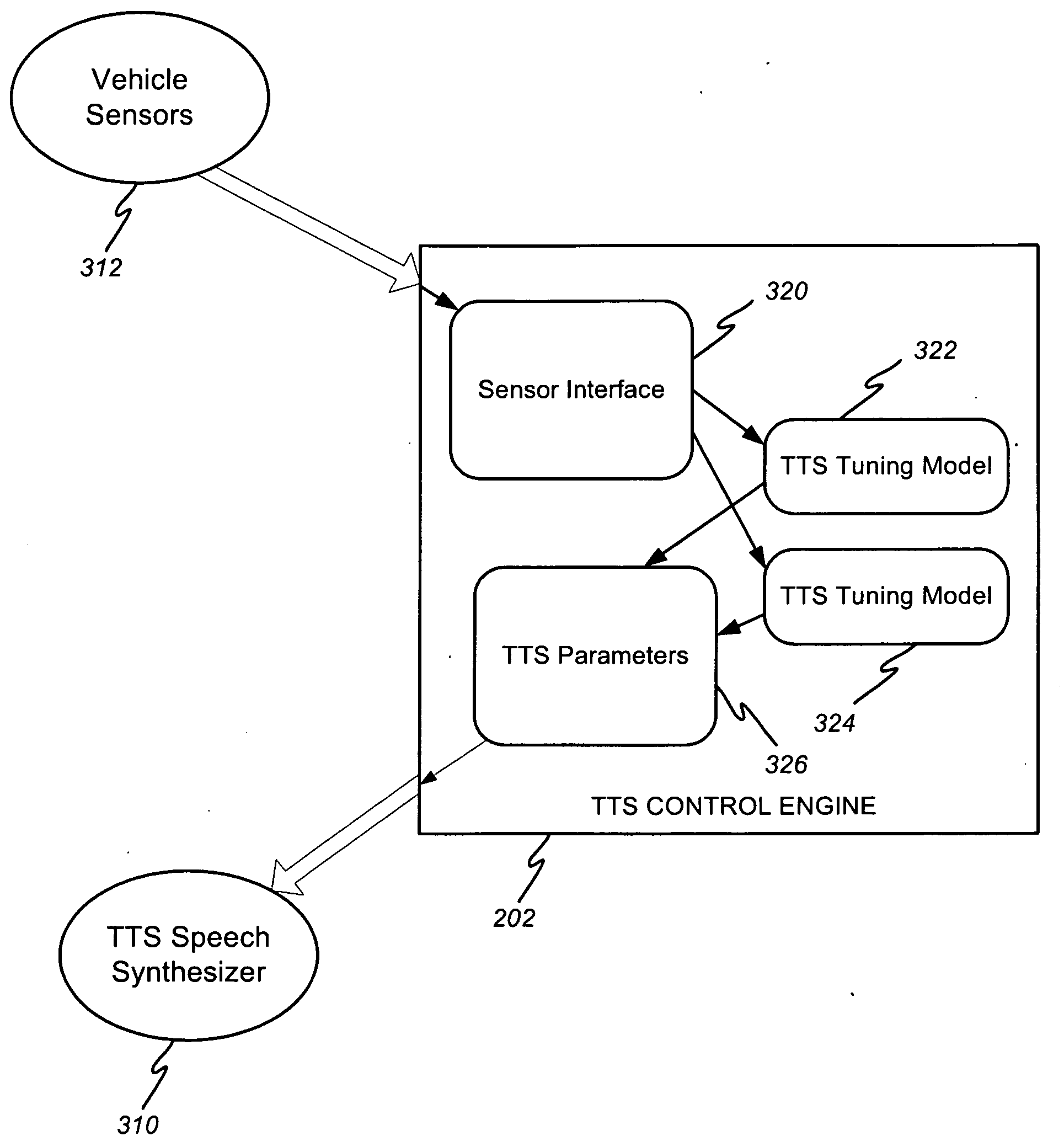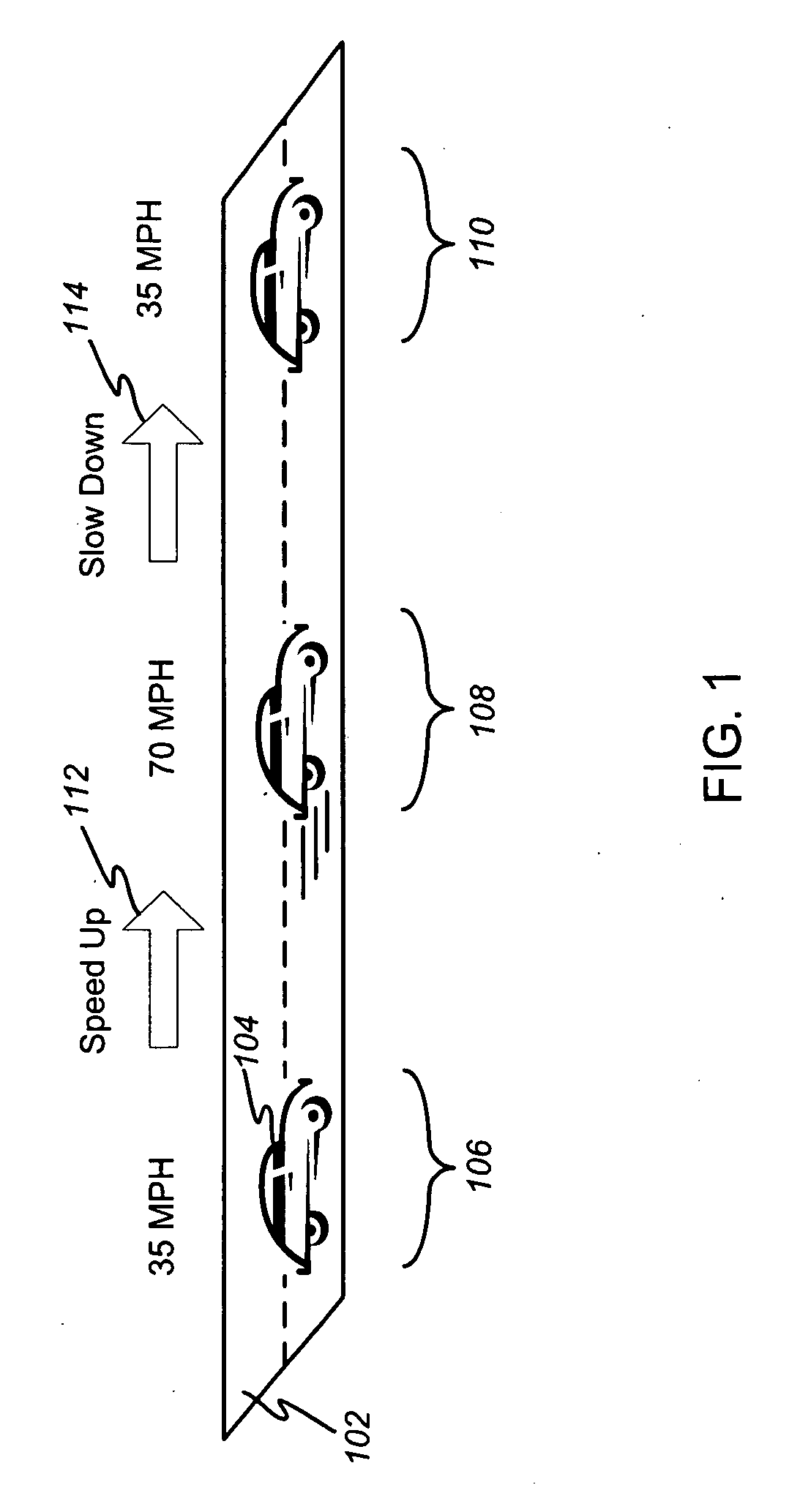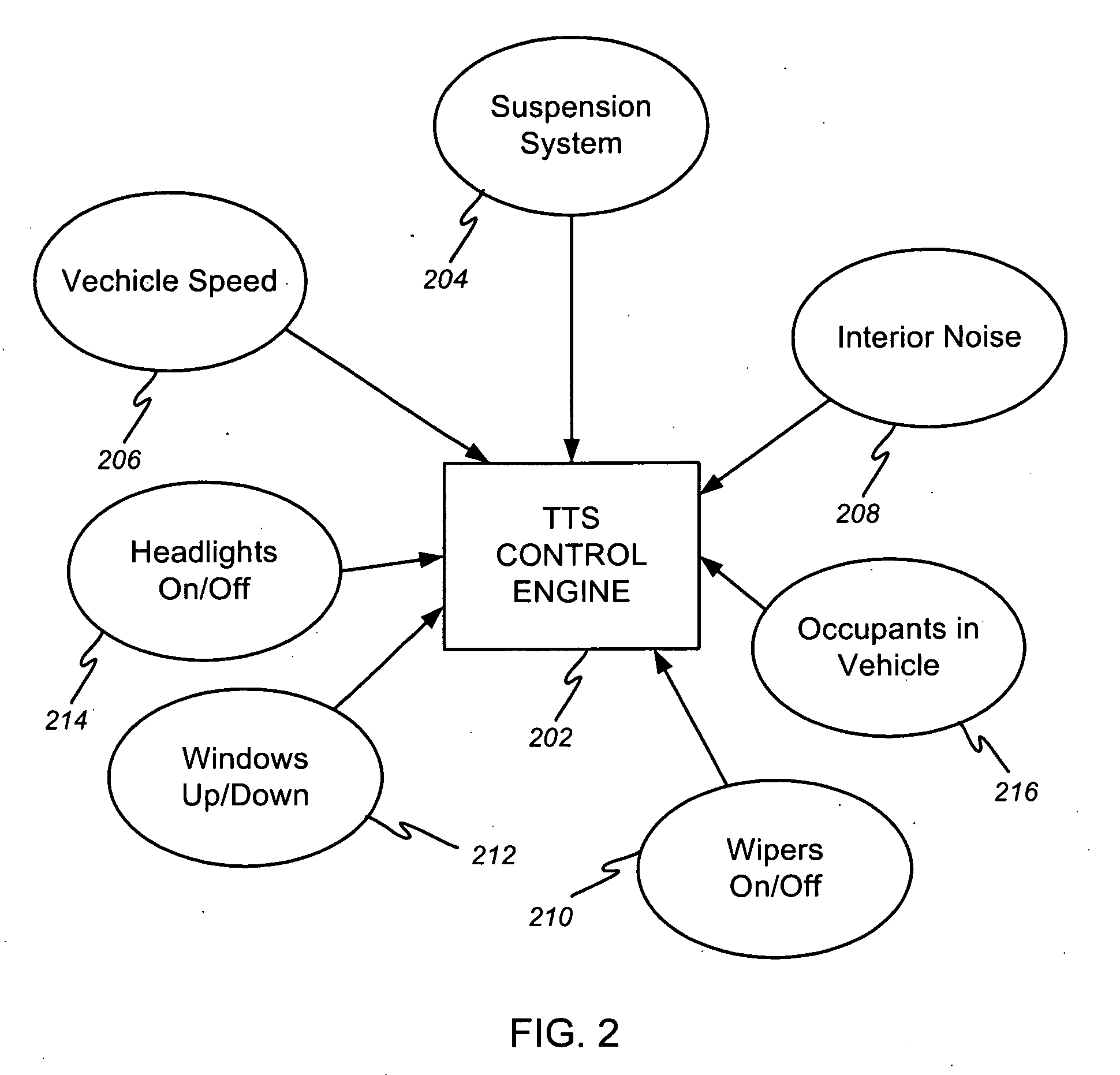Variable text-to-speech for automotive application
a technology of text-to-speech and automotive applications, applied in the field of text-to-speech, can solve the problems of affecting the driver's ability to pay attention, unable to address any of these existing systems, and the driver's concentration level, so as to increase the intelligibility
- Summary
- Abstract
- Description
- Claims
- Application Information
AI Technical Summary
Benefits of technology
Problems solved by technology
Method used
Image
Examples
Embodiment Construction
[0019]A text-to-speech (TTS) system for automotive vehicles is presented that allows for optimal tuning of TTS speech parameters to maximize intelligibility across a wide variety of driving conditions. A typical driving scenario is depicted in FIG. 1. A vehicle 104 travels along a road 102. During a first time interval 106, the vehicle is moving at thirty-five miles per hour with minimal environmental noise resulting from the operation of the engine, the tires on the road, and the interaction of wind with the chassis. During interval 106, the driver may be relatively relaxed and not under considerable stress. When the driver uses the TTS system during interval 106, the speed, pitch, volume, and other characteristics of the synthesized voice may be adjusted accordingly. For example, the speed of the synthesized voice may be set relatively high, the volume may be set relatively low, and the pitch and other properties of the synthesized voice may be set to desirable levels associated w...
PUM
 Login to View More
Login to View More Abstract
Description
Claims
Application Information
 Login to View More
Login to View More - R&D
- Intellectual Property
- Life Sciences
- Materials
- Tech Scout
- Unparalleled Data Quality
- Higher Quality Content
- 60% Fewer Hallucinations
Browse by: Latest US Patents, China's latest patents, Technical Efficacy Thesaurus, Application Domain, Technology Topic, Popular Technical Reports.
© 2025 PatSnap. All rights reserved.Legal|Privacy policy|Modern Slavery Act Transparency Statement|Sitemap|About US| Contact US: help@patsnap.com



